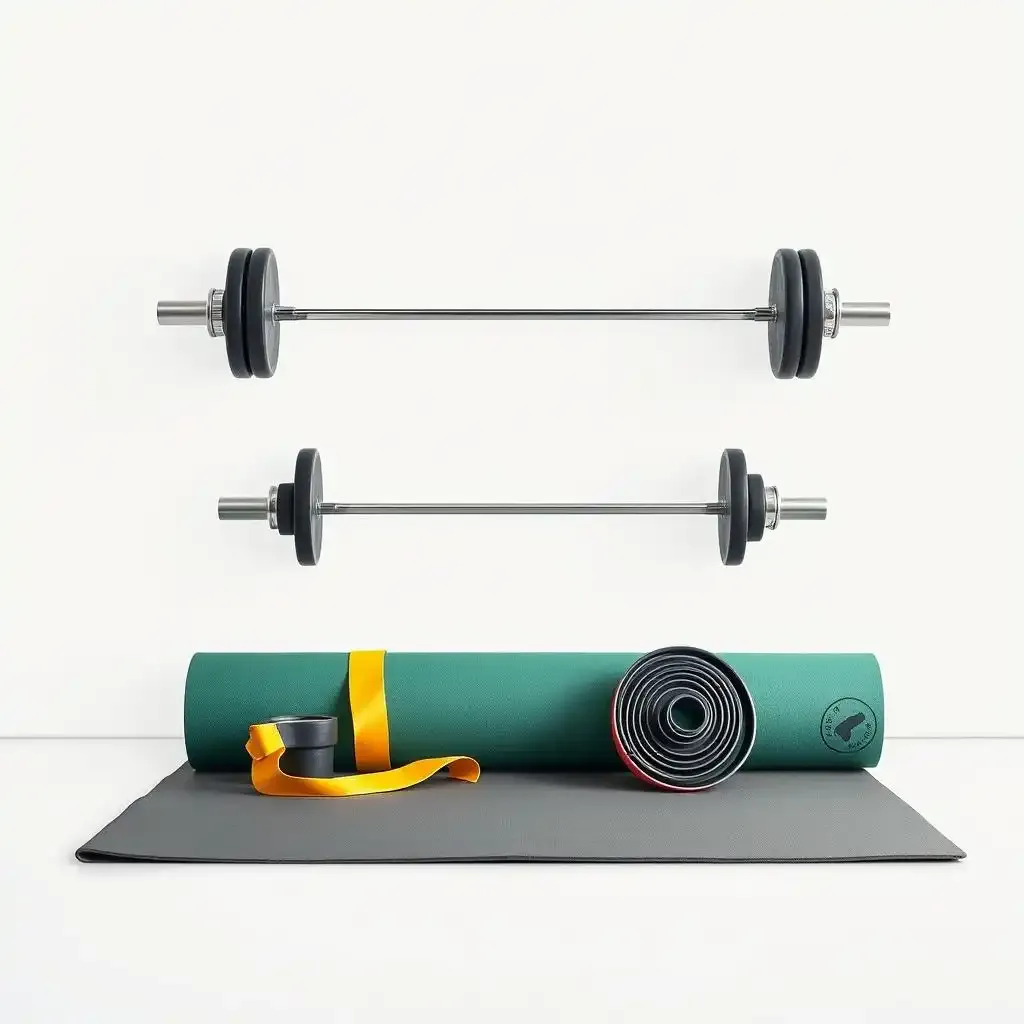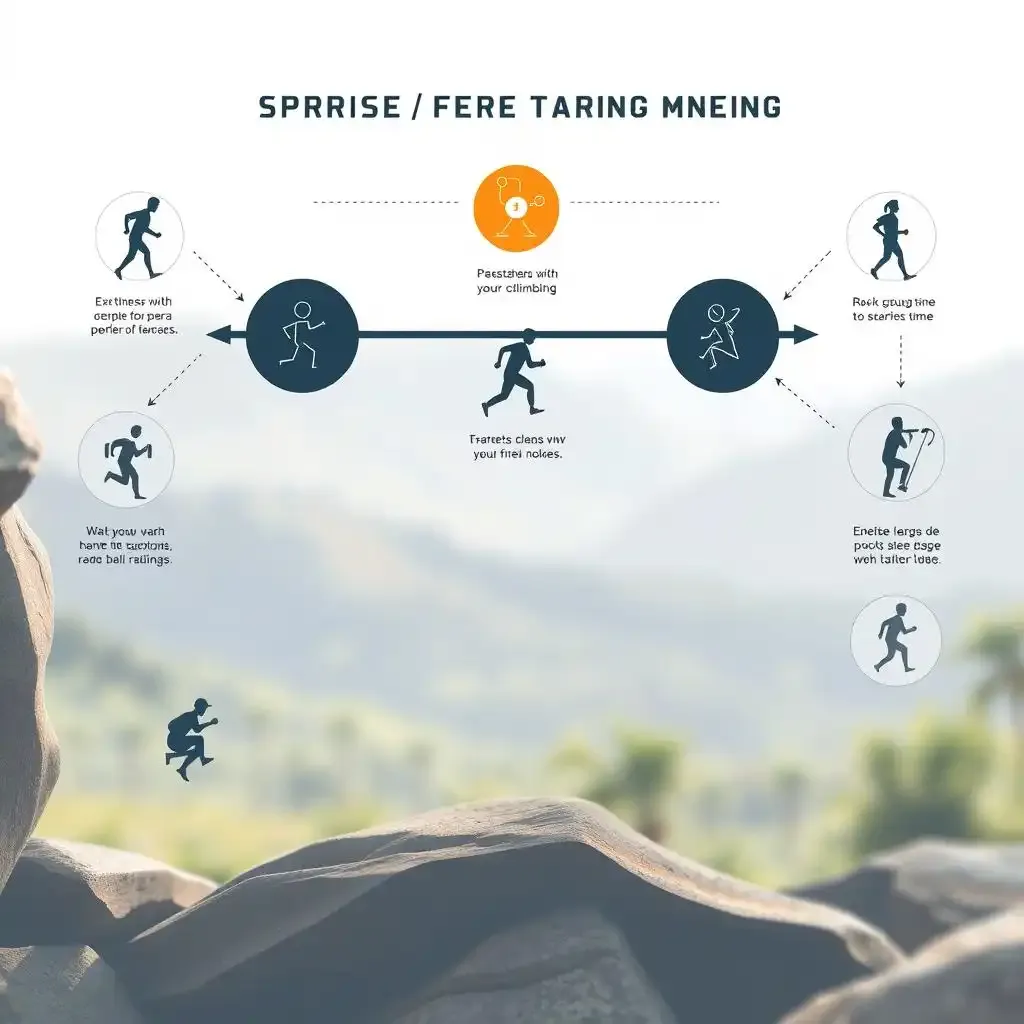Table of Contents
So, you want to get stronger? Fantastic! Strength training isn't just for bodybuilders; it's a game-changer for everyone, from kids to grandparents. Whether you dream of bench-pressing a small car (don't actually try that), running faster, or just feeling more confident in your own skin, a solid strength training plan is your secret weapon. At kizworld, we believe that strength training should be fun, accessible, and effective. This article will guide you through various strength training plan options, helping you choose the right one for your fitness level and goals. We'll cover everything from beginner-friendly routines to advanced programs, so get ready to free your inner strength! Remember, consistency is key – even small steps taken regularly will lead to amazing results. Let’s begin on this exciting trip together!
Strength Training Plan Type | Description | Who it's for | Key Features |
|---|---|---|---|
Beginner Strength Training Plan | A simple, 31-day plan focusing on fundamental exercises. | Individuals with little to no strength training experience. | Bodyweight and dumbbell exercises; 3 sets of 10 reps. |
Muscle Gain Strength Training Plan | A more advanced plan emphasizing muscle growth. | Those aiming to increase muscle mass and size. | Free weights, 4-day upper/lower split, detailed diet plan. |
Runner's Strength Training Plan | A 16-week plan designed to complement running training. | Runners seeking injury prevention and performance enhancement. | Focus on capability, coordination, and running economy. |
Intermediate Strength Training Plan | A plan for those with some strength training experience. | Individuals comfortable with various exercises and weights. | Alternating upper/lower body workouts; compound and accessory exercises. |
Goal-Specific Strength Training Plan | A customized plan personalized to a particular objective. | Individuals with specific goals, e.g., dealing with competition. | Focus on relevant exercises and intensity levels. |
Ultimate Strength Training Plan: Get Stronger Now
Crafting Your Perfect Strength Training Plan
Laying the Foundation: Your First Strength Training Plan
So, you're ready to build a strength training plan? Awesome! Think of it like building a LEGO castle – you start with a strong base, then add more pieces as you get stronger. For beginners, a simple plan focusing on major muscle groups is key. We're talking squats, push-ups (against a wall if you need to!), rows (using a sturdy table!), and planks. Aim for 2-3 sets of 8-12 repetitions for each exercise. Don't go crazy with the weight initially; focus on proper form. It's like learning to ride a bike – you don't want to start with a downhill race! Remember to rest between sets, allowing your muscles to recover. And hey, even if you feel a little silly doing these at first, remember you’re making progress, building a foundation for a stronger you. Want to learn more about the importance of a solid foundation? Check out our article on strength training fundamentals.
Exercise | Sets | Reps | Rest (seconds) |
|---|---|---|---|
Squats | 3 | 10-12 | 60 |
Push-ups (modified if needed) | 3 | 8-10 | 60 |
Rows (using table or sturdy surface) | 3 | 8-10 | 60 |
Plank | 3 | 30-60 seconds | 60 |
Progressing Your Strength Training Plan: It's All About the Trip
Once you've got the basics down, it's time to level up! Think of it as adding more and more amazing towers to your LEGO castle. This is where progressive overload comes in. It’s simply about gradually increasing the challenge. Maybe you add more reps, sets, or try a slightly harder variation of an exercise. For example, if you're doing wall push-ups, graduate to knee push-ups, then regular push-ups. Or, instead of using a table for rows, try using resistance bands. Remember, consistency is your best friend here. Even small increases in weight or difficulty make a big difference over time. And if you’re feeling a little lost, our calisthenics frequency guide can help you stay on track. Remember, it’s not about how fast you progress, it's about consistent improvement.
- Increase the number of repetitions.
- Increase the number of sets.
- Try harder variations of exercises.
- Add weight (dumbbells, resistance bands).
- Reduce rest time between sets.
Crafting Your Perfect Strength Training Plan
Strength Training Plans for Beginners: Baby Steps to Big Gains
Getting Started: Your First Workout
Hey there, future strength champ! Let's ditch the complicated gym routines and focus on building a solid foundation. Think of your body like a super cool LEGO castle – you wouldn't build the tallest tower first, right? You start with a strong base. That's what we're doing here! We'll start with simple exercises that hit all the major muscle groups. We're talking squats (like sitting down in a chair but without the chair!), push-ups (against a wall if you need to, no shame!), rows (using a sturdy table – get creative!), and planks (holding a super-hero pose!). Aim for 2-3 sets of 8-12 repetitions for each exercise. Don't go overboard with the weight – focus on getting the moves right. It's like learning to ride a bike – you don't start with a downhill race! Remember, a little bit of effort every day goes a long way. Want to know more about the basics? Check out our guide on .
Exercise | Sets | Reps | Rest (seconds) |
|---|---|---|---|
Squats | 3 | 10-12 | 60 |
Push-ups (modified if needed) | 3 | 8-10 | 60 |
Rows (using table or sturdy surface) | 3 | 8-10 | 60 |
Plank | 3 | 30-60 seconds | 60 |
Making Progress: Level Up Your Fitness
Okay, so you've mastered the basics? Fantastic! Now it's time to make things a little more challenging. Think of it like adding awesome towers to your LEGO castle! This is where "progressive overload" comes in – it's all about gradually making things harder. Maybe you add more reps (repetitions), sets (rounds of exercises), or try a slightly harder version of an exercise. For example, if you’re doing wall push-ups, try knee push-ups next, then regular ones. Or, instead of using a table for rows, try using resistance bands. Remember, consistency is your secret weapon. Even tiny increases in weight or difficulty make a big difference over time. Feeling a bit unsure about how often to train? Our might help. It's not about speed, it's about steady improvement!
- Increase reps
- Increase sets
- Try harder exercise versions
- Add weights (dumbbells, resistance bands)
- Shorten rest time
Listen to Your Body: Rest and Recovery
I know, I know, you're super excited to get strong, but remember, your body needs a break too! It's like a super cool video game – you can't play non-stop without needing a recharge. Rest days are crucial for muscle recovery and growth. Think of it like this: when you build your LEGO castle, you don't build every single piece at once. You take breaks to make sure it's sturdy and amazing! Aim for at least one rest day per week, and listen to your body. If you're feeling super sore, take an extra day off. Don't push yourself too hard, especially when you're starting out. And remember, you can always find more tips and tricks on our site, such as our insights on do calisthenics work?
Intermediate and Advanced Strength Training Plans: Level Up Your Fitness
Adding Weight and Resistance: Building a Stronger You
Okay, so you've conquered the beginner's strength training plan? High five! Now it's time to seriously up the ante. Think of it like this: you've built a solid LEGO castle, now we're adding those epic, soaring towers. For intermediate training, we’re introducing weights! Dumbbells, kettlebells, resistance bands – they're your new best friends. Start gradually, adding small amounts of weight each week. Remember proper form is still crucial; you don't want to injure yourself trying to lift like a superhero. Listen to your body, and don't hesitate to take rest days. Consistency is key, but so is avoiding injury! Need some ideas on which exercises to add? Check out our gym training guide for more inspiration.
Exercise | Weight (kg) | Sets | Reps | Rest (seconds) |
|---|---|---|---|---|
Barbell Squats | Start light, gradually increase | 3 | 8-12 | 60-90 |
Bench Press | Start light, gradually increase | 3 | 8-12 | 60-90 |
Bent-over Rows | Start light, gradually increase | 3 | 8-12 | 60-90 |
Introducing Advanced Techniques: Mastering Your Body
Once you're comfortable with weights, we can move onto more advanced techniques. Think of this as adding intricate details to your LEGO castle – gargoyles, hidden passages, maybe even a miniature drawbridge! We can start incorporating plyometrics (think jump squats and box jumps), advanced calisthenics moves (like muscle-ups or handstand push-ups), and even isometric exercises (holding a position for a certain amount of time). These will challenge your muscles in new ways, building both strength and strength. It's important to have a solid foundation before you attempt these advanced moves, though, so don't rush it! For a more in-depth look into calisthenics, check out our calisthenics workouts page.
- Plyometrics (jump squats, box jumps)
- Advanced calisthenics (muscle-ups, handstand push-ups)
- Isometric exercises (planks, wall sits)
Personalizing Your Plan: Finding Your Perfect Fit
At this point, your strength training plan should be customized to your specific goals. Remember, this isn't one-size-fits-all. Maybe you're training for a specific event, like a marathon or a competition. Perhaps you're focusing on building muscle, improving endurance, or just feeling generally stronger. Your plan should reflect your unique needs and aspirations. Remember to track your progress and adjust your plan accordingly. Don't be afraid to experiment and find what works best for you. Our personal training course can help you create a truly customized plan.
Intermediate and Advanced Strength Training Plans: Level Up Your Fitness
Tailoring Your Strength Training Plan for Specific Goals
Okay, so you've got the basics down – you're squatting like a boss, planking like a superhero, and your push-ups are making your arms sing (in a good way!). But what if you have a specific goal in mind? Maybe you're training for a marathon, aiming for that killer rock climbing physique, or simply want to be able to carry all the groceries in one trip without feeling like you're going to collapse. That’s where things get really exciting! A personalized strength training plan is like having a tailor-made suit for your fitness goals; it fits perfectly and helps you achieve maximum results. It's not just about random exercises; it’s about strategic selection personalized to what you want to achieve. For example, runners benefit from exercises that improve leg strength and stamina, like hill sprints and plyometrics. Want to know more about designing a plan that works for you? Check out our for more detailed information.
Goal | Focus | Example Exercises |
|---|---|---|
Marathon Training | Leg strength and endurance | Squats, lunges, hill sprints |
Rock Climbing | Grip strength, upper body strength | Pull-ups, dead hangs, campus board training |
General Fitness | Full body strength and conditioning | Squats, push-ups, rows, planks |
Think about your goal as a magnificent LEGO castle you're building. Each exercise is a brick, carefully chosen and placed to create the specific structure you envision. For a marathon runner, the focus is on building a strong, resilient base, like the foundation of a castle. For a rock climber, it’s about building those towering walls, requiring incredible upper body strength and grip. For general fitness, it’s about creating a balanced, well-proportioned castle, encompassing all aspects of your body. Each brick—each exercise—is vital in creating the overall structure. And remember, just like building a castle, it takes time and patience to build strength. Don’t get discouraged if you don’t see results immediately. Check out our body transformation guide for more inspiration.
- Identify your specific goal (marathon, rock climbing, general fitness).
- Select exercises that target the relevant muscle groups.
- Gradually increase the intensity and difficulty of your workouts.
- Listen to your body and take rest days when needed.
- Track your progress and adjust your plan as needed.
I’ve seen people completely transform their lives with targeted strength training. One of my friends, Sarah, wanted to improve her rock climbing. She started with basic exercises like pull-ups and gradually increased the difficulty. Now she's scaling walls like a mountain goat! Another friend, Mark, who's training for a marathon, focused on building leg strength and endurance. Now he's running longer distances with greater ease. It's amazing what you can achieve with a bit of planning and dedication. Remember, it's a progression, not a race. Need some extra motivation? Check out our to see what's possible!
Tailoring Your Strength Training Plan for Specific Goals
Final Thought
Building strength is a process, not a race. Finding the right strength training plan is a crucial first step, but remember to listen to your body, adjust as needed, and celebrate your progress along the way. Consistency and patience are your allies. With a well-structured plan and a commitment to your fitness, you'll be amazed at what you can achieve. So, grab those dumbbells (or your own body weight!), and let's get strong!